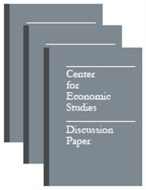Air Pollution Abatement Costs Under the Clean Air Act: Evidence from the PACE Survey
Air Pollution Abatement Costs Under the Clean Air Act: Evidence from the PACE Survey
Abstract
This paper uses establishment-level data from the U.S. Census Bureau’s Pollution Abatement Costs and Expenditures (PACE) survey to investigate the effects of air quality regulation on the air pollution abatement capital expenditures and operating costs of manufacturing plants from 1979-1988. Results, based on some 90,000 observations, show that heavy emitters of the “criteria” air pollutants (covered under the Clean Air Act) had significantly larger APA costs, and those subject to greater “local” regulation (due to county NAAQS non-attainment) had expenditures that were greater still. The local regulation of a particular air pollutant generally resulted in hundreds of thousands of dollars (or more) of additional costs, with larger establishments and capital expenditures disproportionately affected. Federal and state environmental standards appear to have played a notable role, particularly in industries producing chemicals, petroleum, primary metals, and nonmetallic minerals. The findings of this paper support those of several recent studies.




